7 Beautiful Places In Italy Without the Crowds
7 min readThe Italian peninsula brings in millions of international tourists every year, drawn to the incredible diversity of the country: There are bustling cities, storybook-like villages, bucolic countryside, glittering beaches, and dramatic mountain peaks. So choosing where to go on a trip to Italy is no easy task, and avoiding the crowds can be even harder.
As a Rome resident, I’ve traveled around the country and have explored plenty of places away from the likes of Venice and Pompeii. Here are my top picks for Italy’s most beautiful, but still less-crowded destinations.
Cortina d’Ampezzo
- Location: Veneto
- Come for: outdoor adventure
Nicknamed the Queen of the Dolomites, this ski town will get its turn in the spotlight when it cohosts the 2026 Winter Olympics with Milan. For now, though, it’s still rather under the radar when it comes to international tourism. Skiing is the main draw here, but even if you don’t ski, you can enjoy taking the cable car up Tofana Mountain for some apple strudel and Vov (an Italian version of eggnog) at the chalet-like Ristorante Col Druscié. In the summer, the ski runs become hiking trails, and you can rent a rowboat and paddle around the emerald Lago di Braies.
How to get to Cortina d’Ampezzo
The closest airport is about a two-hour drive away at Treviso (TSF), but there are more international flight connections at Venice Marco Polo, which is only slightly farther. From there, it’s about a two-hour drive north to Cortina.
Where to stay: Hotel de Len
Conveniently located in Cortina d’Ampezzo’s center, the 22-room Hotel de Len is an alpine chic getaway with wooden accents throughout the property (de len means “of wood” in Latin). For the best views of the mountains surrounding you, head to its sixth-floor spa.
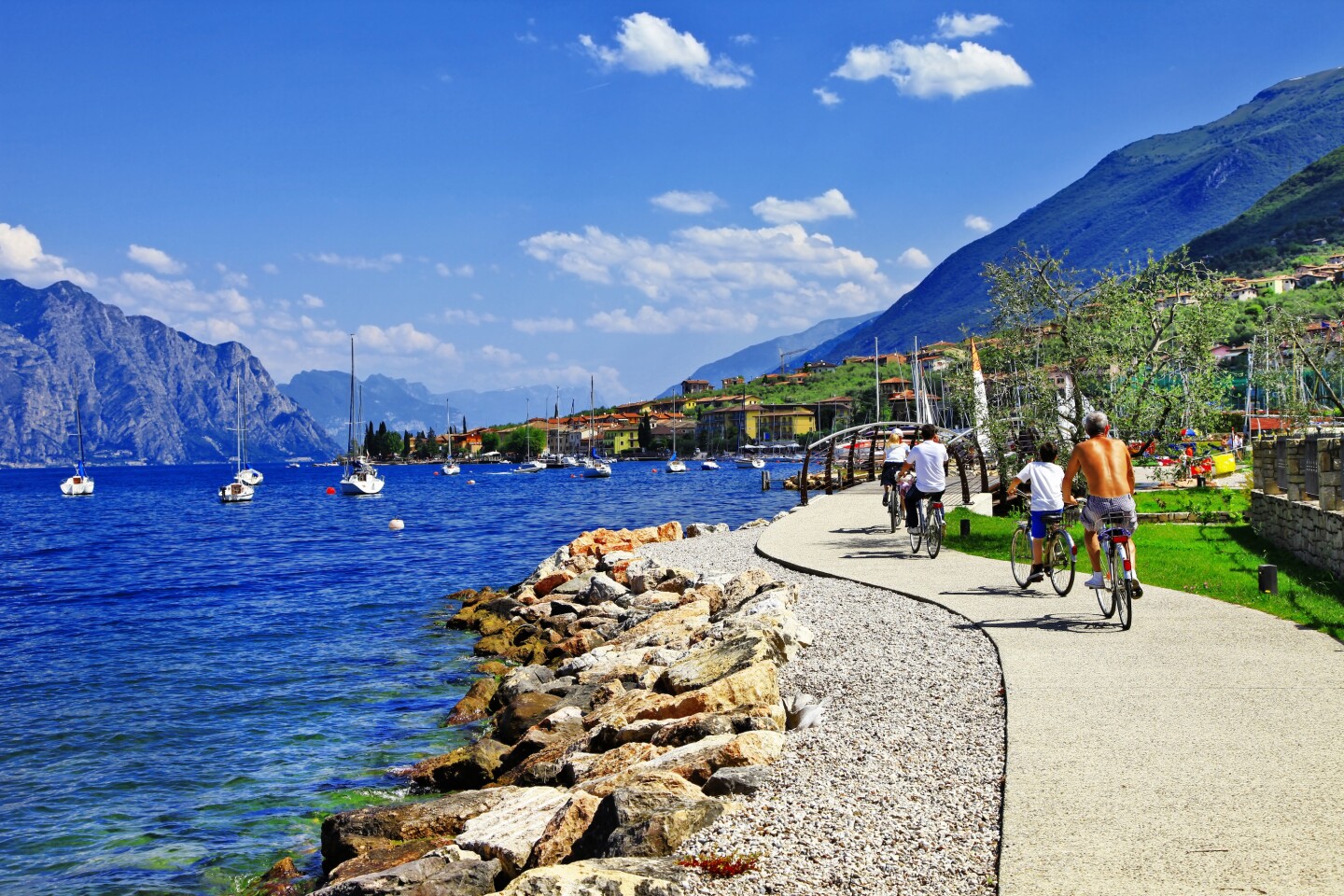
Enjoy the slow pace of life in Lake Garda towns like Malcesine.
Photo by leoks/Shutterstock
Lake Garda
- Location: Lombardy and Veneto
- Come for: lake life that rivals Lake Como
Lake Como may be more famous, but Lake Garda takes the title of being Italy’s largest lake, and like Como, it has plenty of charming villages on its shores. The biggest difference between them is that Lake Como has become exorbitantly expensive, but Lake Garda offers great value, including at its luxury hotels and upscale restaurants, where you can live la dolce vita without feeling like you’re being nickel-and-dimed. Towns on the western side lie in Lombardy, while the towns on the eastern shore are in Veneto, and the very northern tip touches Trentino–Alto Adige. Come here to sail on the water, hike or cycle along its shores, and visit such villages as Sirmione, and Limone sul Garda, where lemons grow thanks to the Garda’s unique microclimate.
How to get to Lake Garda
If your hotel is on the western side, fly to Milan; if it’s on the eastern side, fly to Verona or Venice. Trains will bring you to a few towns on the lake; other towns are reachable via ferry or car.
Where to stay: Cape of Senses
Opened in July 2023, the 55-suite Cape of Senses is a hideaway with incredible views of Lake Garda. The resort is adults-only (guests must be 14 and older).
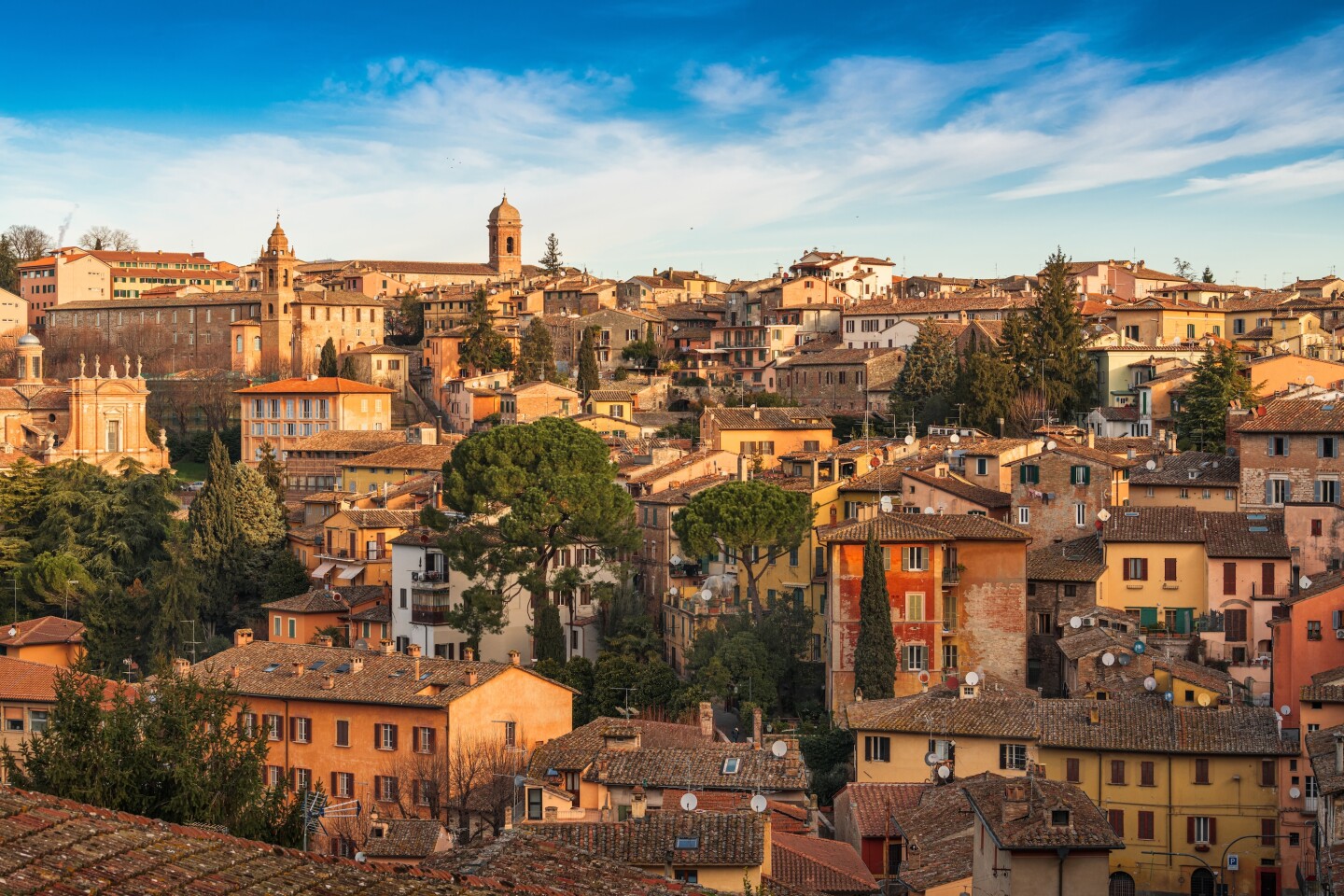
Perugia is around 100 miles north of Rome.
Photo by Sean Pavone/Shutterstock
Perugia
- Location: Umbria
- Come for: medieval charm and artisans keeping local traditions alive
The capital of Umbria, Perugia is one of Italy’s best-preserved medieval cities, so strolling around the city center feels almost like stepping back in time. After admiring medieval and Renaissance art at the Galleria Nazionale dell’Umbria, visit the Museo Atelier Giuditta Brozzetti and Studio Moretti Caselli, where artisans preserve the traditions of textile weaving and stained glass painting, respectively. What’s more, the city is known for black truffles and the popular Perugina chocolate brand (you can tour the factory), plus many independent chocolatiers too.
How to get to Perugia
San Francesco d’Assisi Airport in Perugia has flight connections with other cities in Europe, including London, but if you’re coming from the USA, it makes more sense to fly to Rome and then take the train, which is about 2.5 to 3.5 hours.
Where to stay: Borgo dei Conti Resort
Umbria is nicknamed Italy’s green heart, so drive 30 minutes away from the city to enjoy the region’s countryside at Borgo dei Conti Resort. The 16-acre property frequently organizes activities for guests to explore the grounds.
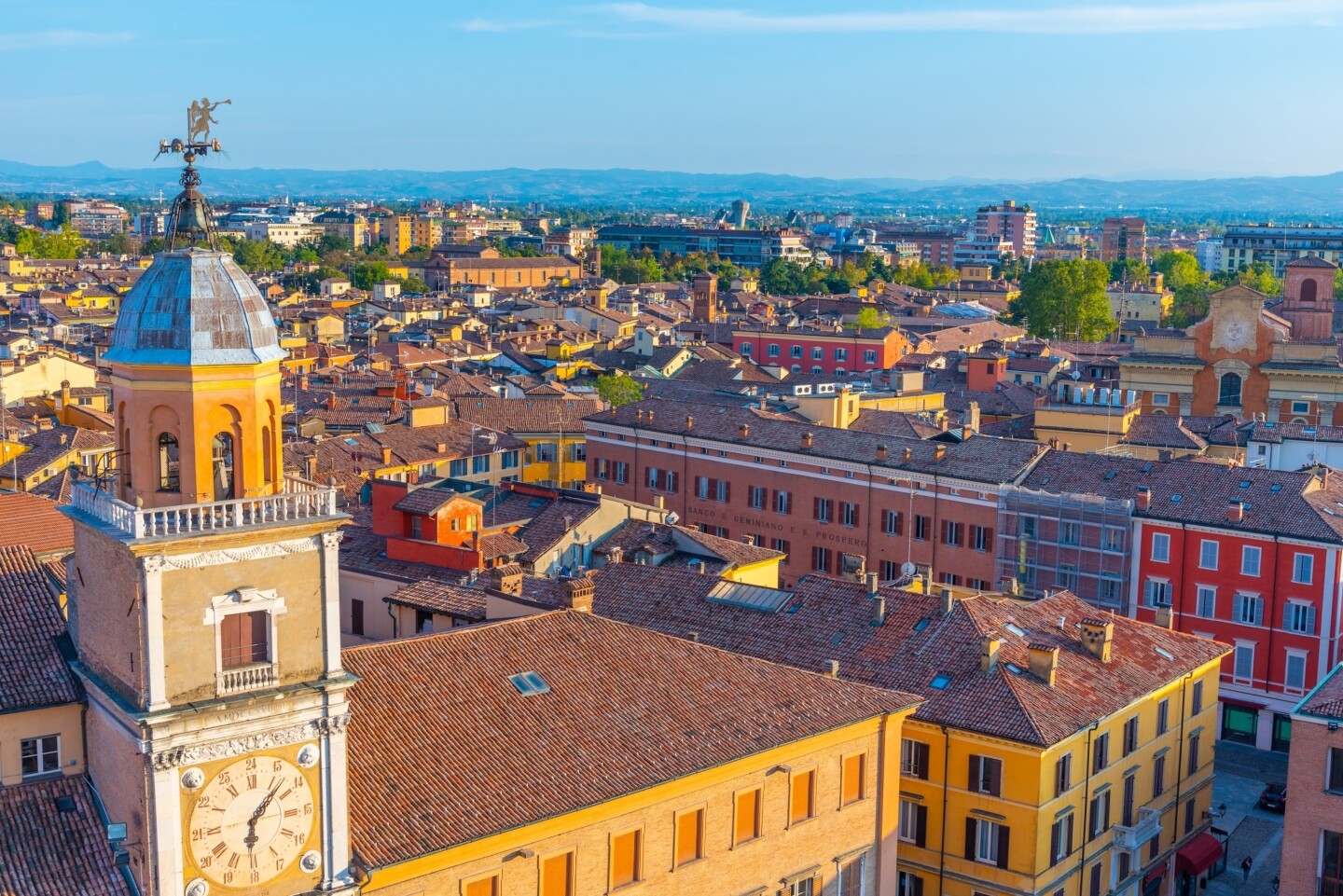
In the center of the Emilia-Romagna region, Modena is home to a population of about 180,000.
Photo by trabantos/Shutterstock
Modena
- Location: Emilia-Romagna
- Come for: some of the best food and fastest cars in the country
This little city half an hour from Bologna punches far above its weight when it comes to gastronomy. Home to the three Michelin–starred Osteria Francescana (and several other restaurants by famed chef Massimo Bottura), it’s situated in Italy’s Food Valley, where products like Parmigiano Reggiano, prosciutto di Parma, and balsamic vinegar are produced. It’s also in the region where brands including Ferrari and Lamborghini are based; the former has not one but two museums you can visit.
How to get to Modena
Fly to Bologna’s Guglielmo Marconi Airport and take a 30-minute train ride to Modena.
Where to stay: Casa Maria Luigia
This 12-room villa is one of Afar’s best hotels in Italy, thanks in part to its well-curated dining experiences. A stay feels like you’re in a loving home, with picturesque views of fields and orchards.
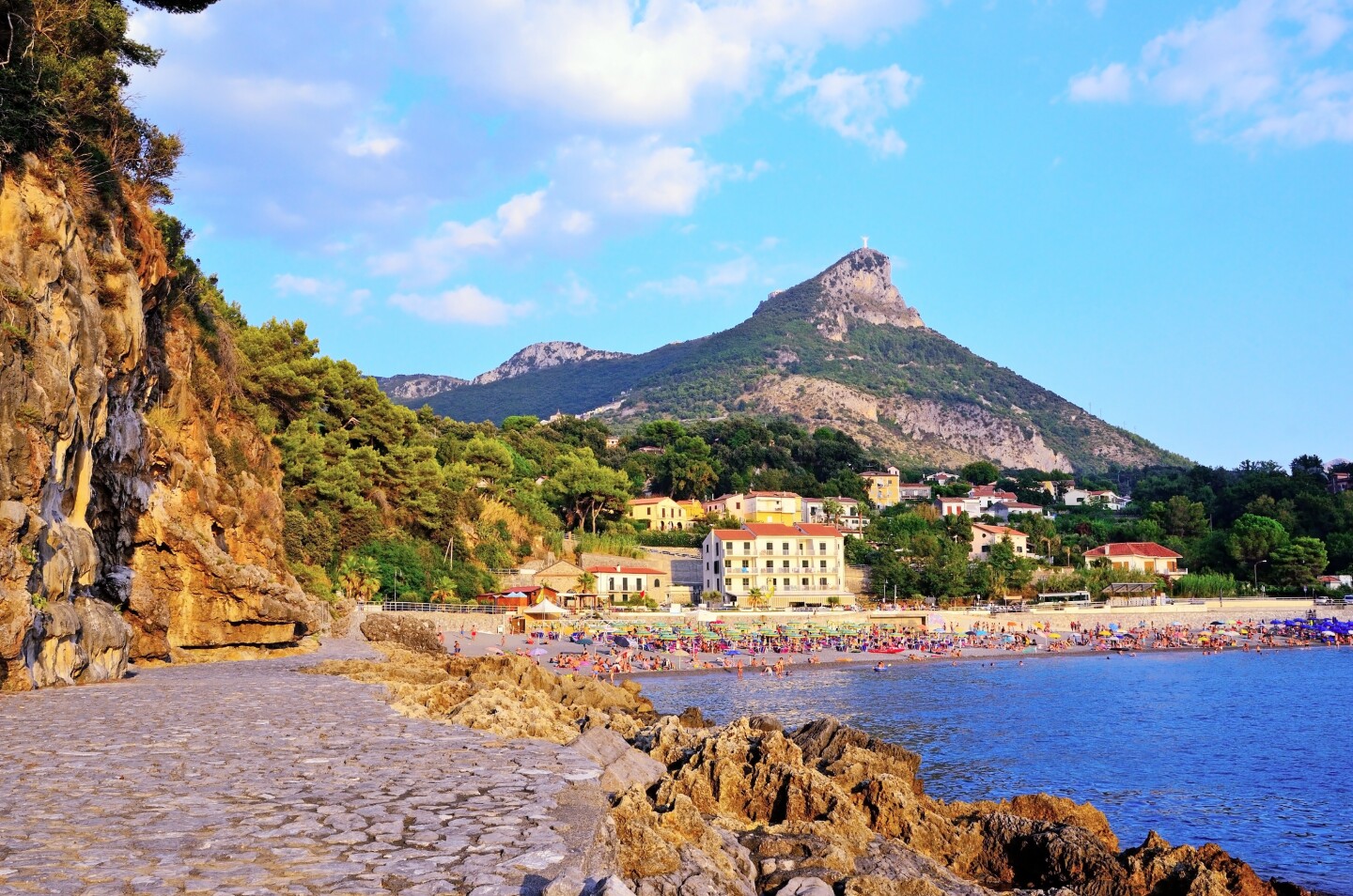
Maratea is located by the Tyrrhenian coast.
Photo by maudanros/Shutterstock
Maratea
- Location: Basilicata
- Come for: undeveloped, unspoiled beaches
Maratea feels a bit like the Amalfi Coast—before it became overrun with tourists. This town on Italy’s southwest coast sports beaches in small rocky coves and an appealing village presided over by a massive statue of Christ the Redeemer (inspired by the one in Rio de Janeiro). Adventurous travelers will also find plenty of hiking trails, including via ferrata climbing routes.
How to get to Maratea
Maratea isn’t the easiest place to reach, which perhaps keeps it from being overdeveloped. The closest airports are Salerno Costa d’Amalfi (about 2 hours away) or Lamezia Terme (a little over 2.5 hours away), which have flight connections within Europe. Otherwise, fly to Naples Capodichino Airport and take a 4-hour train ride or drive 2.5 hours south to Maratea.
Where to stay: Santavenere
Serenity is easily within reach at Santavenere. The 34-room hotel is only a 10-minute drive from Maratea, offering views of the Mediterranean Sea (which you can take in from the alfresco terrace) and private beach access.
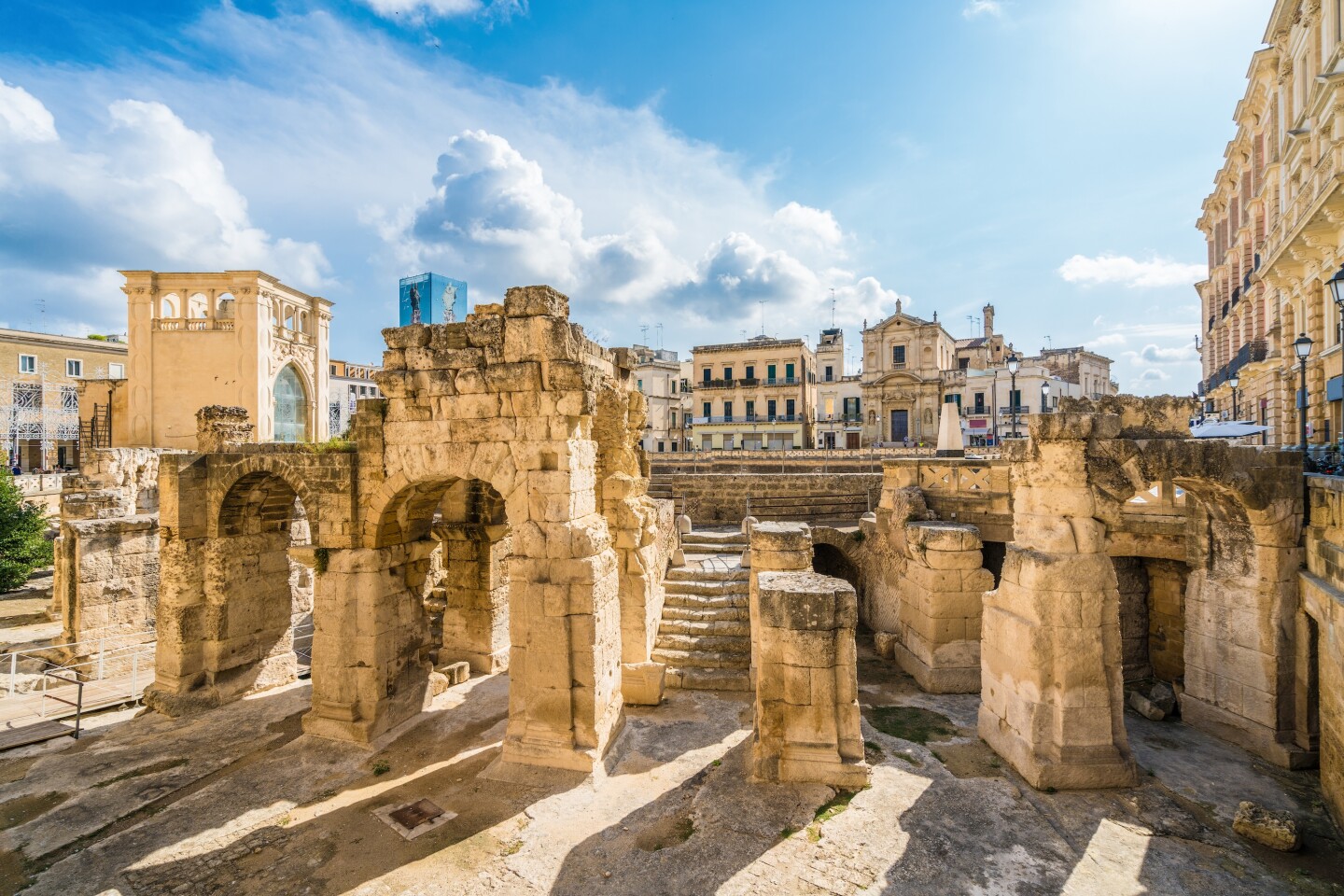
Lecce’s amphitheater is just one of many places for exploring its long history.
Photo by Balate.Dorin/Shutterstock
Lecce
- Location: Puglia
- Come for: beautiful baroque architecture, great food, and proximity to beaches
Lecce’s history stretches back to the Roman Empire, but its most striking buildings are from the Baroque era and their architecture is full of dramatic flourishes. The city is the gateway to Puglia’s Salento peninsula, which is known for fantastic beaches on both the Adriatic and Ionian seas. In the summer, the city tends to empty out during the day while everyone is by the water, then comes alive in the evenings when the piazzas are animated with people enjoying an aperitivo or dinner outdoors.
How to get to Lecce
Brindisi is the closest international airport. From there, you can catch a train to Lecce, which takes about 30 minutes.
Where to stay: Patria Palace
Located in the heart of Lecce’s centro storico, just steps from the Basilica di Santa Croce, this 58-room boutique hotel occupies an 18th-century noble palace. Its rooftop restaurant is a romantic setting for a gourmet dinner that exalts local ingredients.
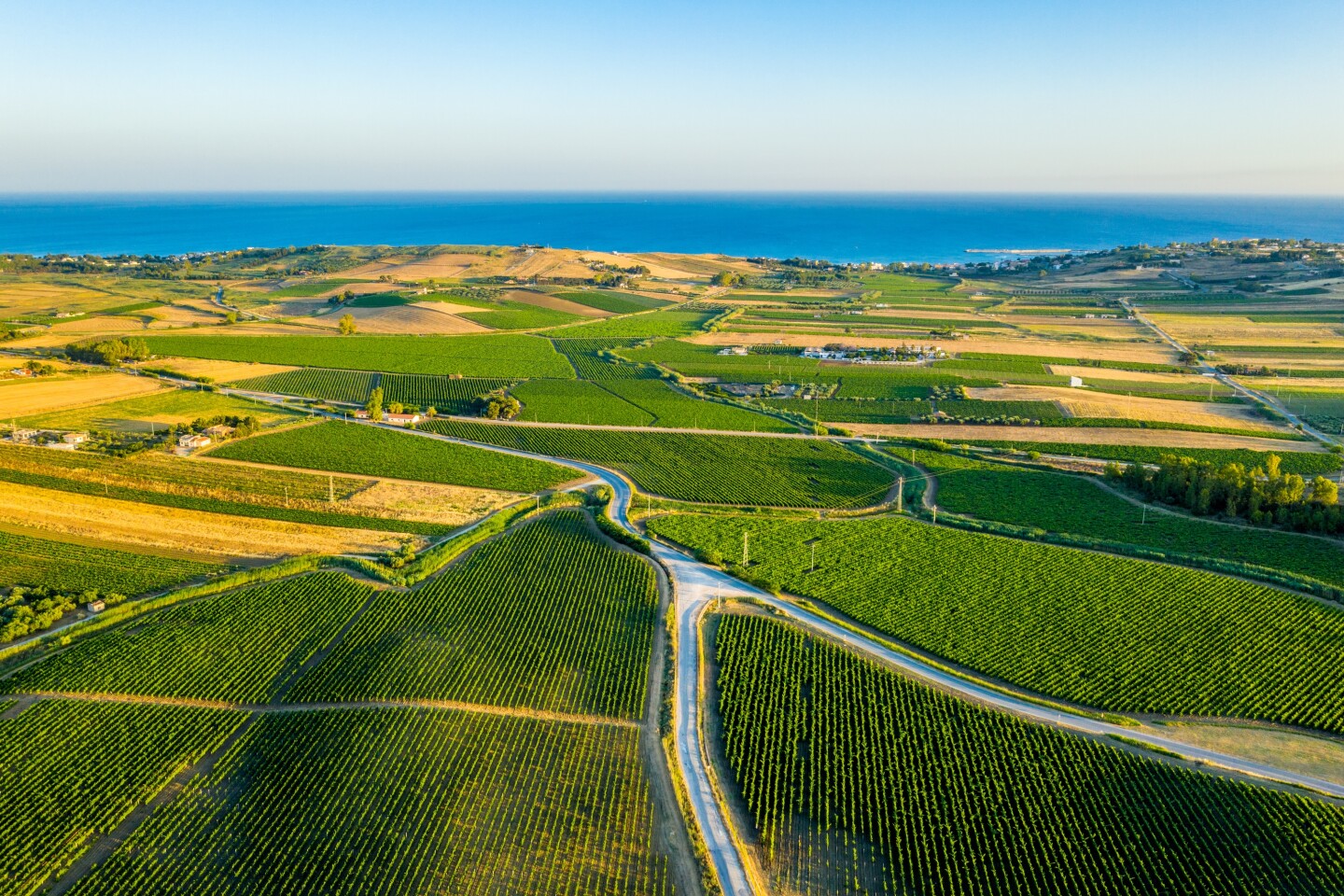
Menfi is a small town in western Sicily known for its wine production.
Photo by Frederick Millett/Shutterstock
Menfi
- Location: Sicily
- Come for: An Italian island’s wild side
Most travelers stick to Sicily’s well-trod cities, like Palermo and Taormina, but if you’re looking to get off the beaten path, consider a trip to the island’s southwestern coast. Menfi itself isn’t much to look at, but it has pristine beaches that don’t get crowded even in the height of summer. It’s also home to some excellent wineries, including Planeta and Mandrarossa. (Planeta also runs the rustic-chic Insula Beach Club.) If you rent a car (which you should), you can also visit the incredible Greek temples in Selinunte, which are much less crowded than the Valley of the Temples in nearby Agrigento.
How to get to Menfi
The closest airport is in Trapani, which has flight connections within Europe. If you’re coming from the United States, fly to Palermo, then rent a car and drive about 90 minutes to Menfi.
Where to stay: La Foresteria
The 14-room boutique country hotel is a 10-minute drive from Menfi and a 7-minute drive from the sea. Each guest room has a terrace that connects to the estate’s working garden, and the brand showcases its wine expertise with tastings (guests even get access to Planeta’s five wineries in Sicily). Another plus: the price. La Foresteria is a place that feels like it should cost $1,000 a night but is more like $300.



